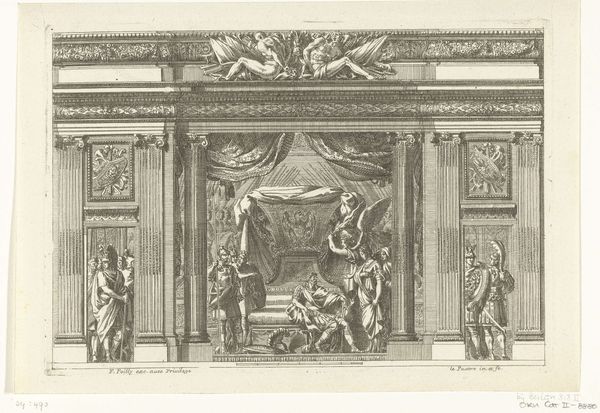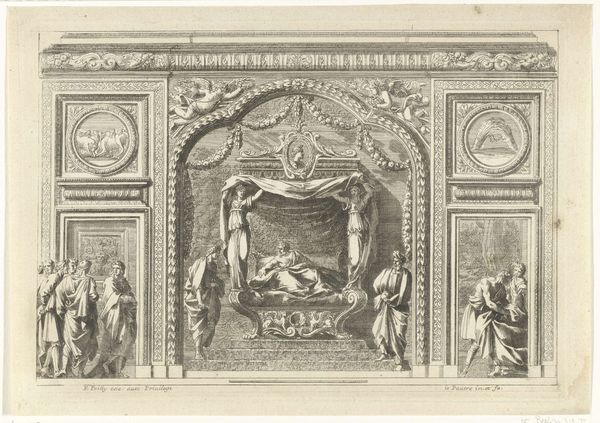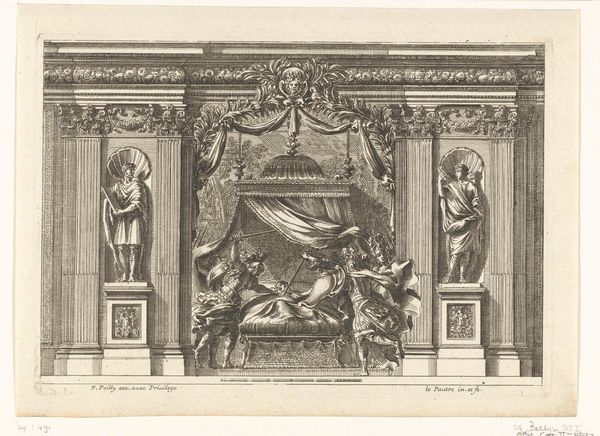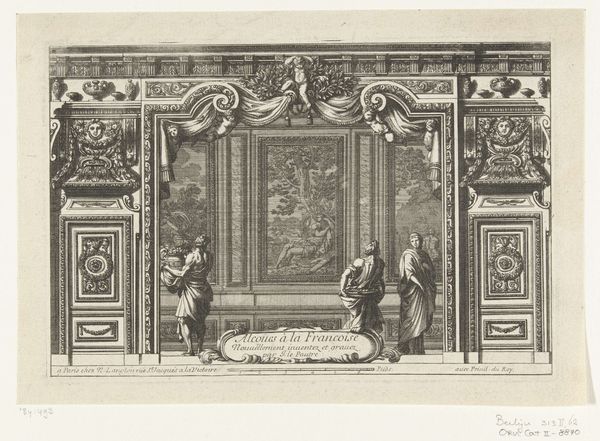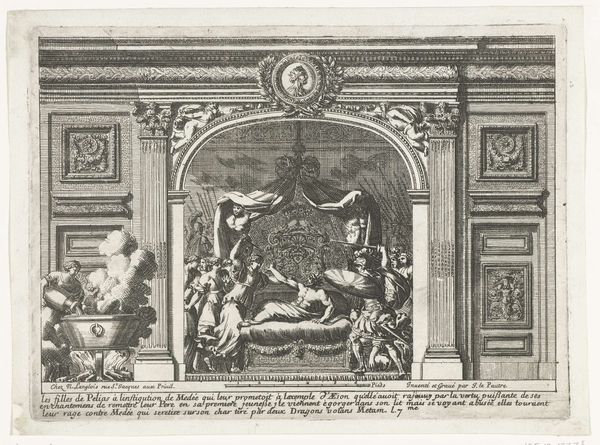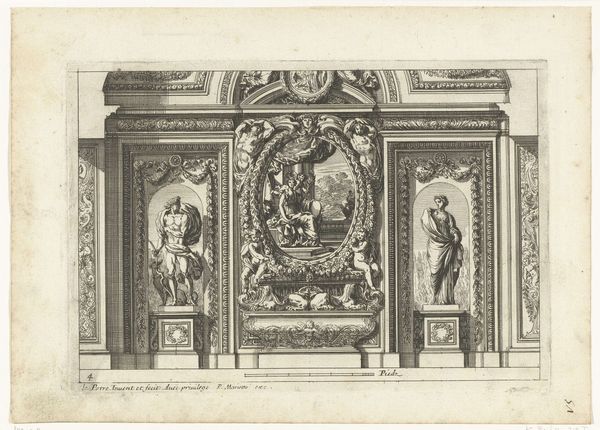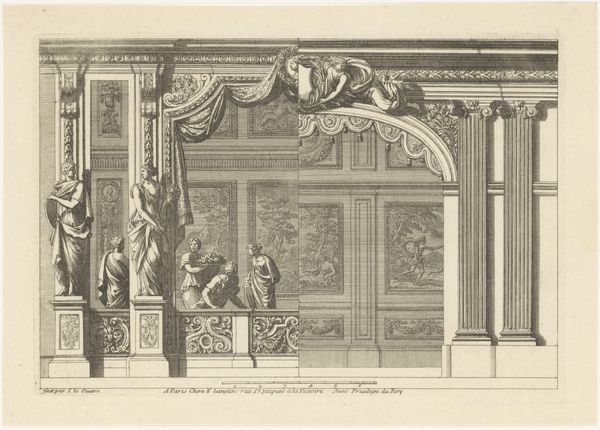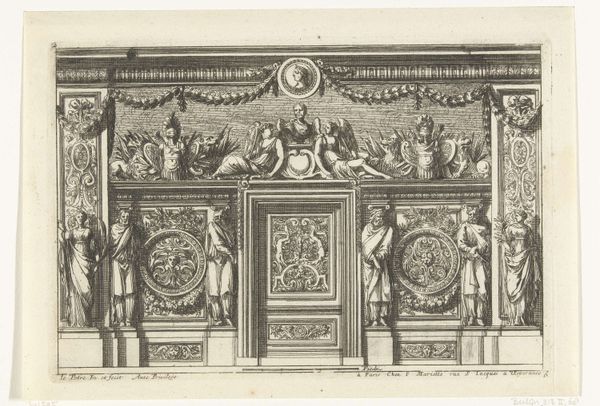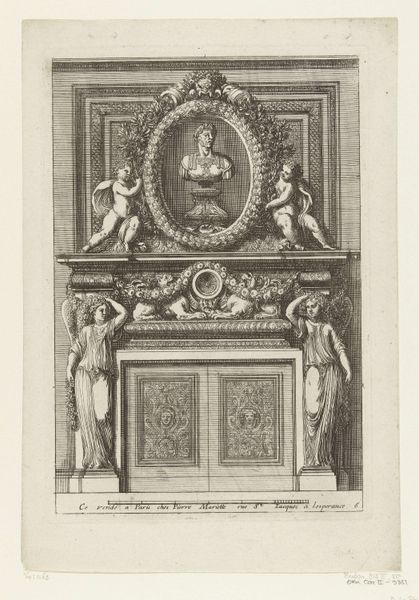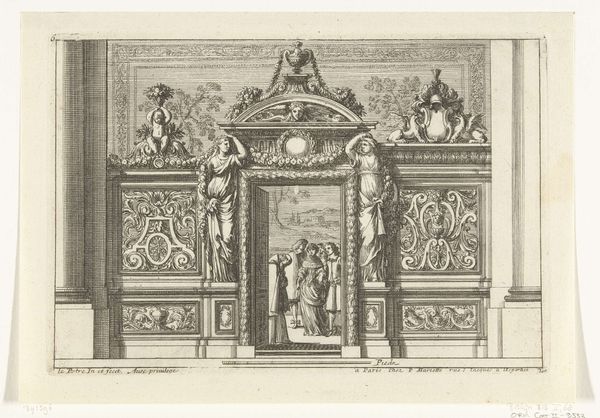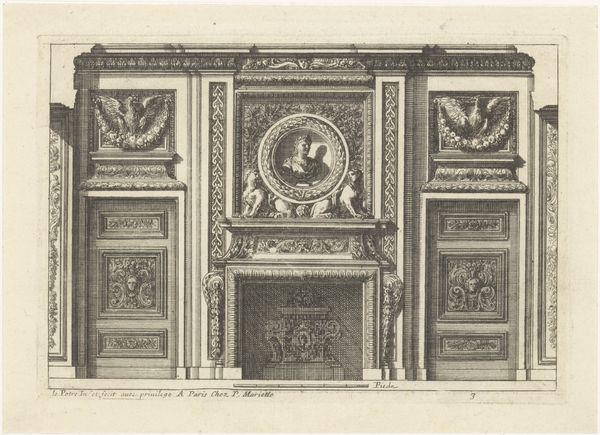
print, etching, architecture
#
baroque
# print
#
etching
#
etching
#
history-painting
#
architecture
Dimensions: height 161 mm, width 234 mm
Copyright: Rijks Museum: Open Domain
Editor: Here we have "Alkoof met leeg bed," an etching from 1665 by Jean Lepautre, currently housed at the Rijksmuseum. The empty bed, draped and ornamented, creates this strange sense of drama without a central figure. It almost feels like we've walked into a scene just moments after something important has happened. What historical context might illuminate this work? Curator: The emptiness is key, isn’t it? Lepautre operated in a world where royal imagery and representations of power were carefully constructed. An alcove like this would typically feature a royal figure, performing some act of governance or receiving visitors. Its emptiness suggests absence or, perhaps, even a critique of that power. The baroque style emphasized drama and emotion, so the absence speaks volumes. Editor: So, is it potentially a statement on the limitations of power or a commentary on political turmoil of the time? Curator: Precisely! The lack of the expected royal figure could be read as subversive. Prints, in particular, circulated widely, becoming vehicles for political messaging. It also prompts a broader question: Who defines power and how is it visually represented? Is Lepautre challenging the status quo by omitting the ruler? What narratives arise because of this "missing" figure? Editor: That’s a very interesting idea. I hadn’t considered how the *absence* of something could be such a powerful statement. Curator: Exactly. By looking at the historical context and the function of the image within society, we uncover so many possibilities and layers of meaning, beyond just an interior setting. Editor: Thanks, that’s helped me look at it from a completely new angle! Now I feel like I could analyse it myself. Curator: My pleasure. It is precisely this analytical perspective of power structures that art enables, when approached thoughtfully, through the lens of history and the institutions that shape it.
Comments
No comments
Be the first to comment and join the conversation on the ultimate creative platform.

